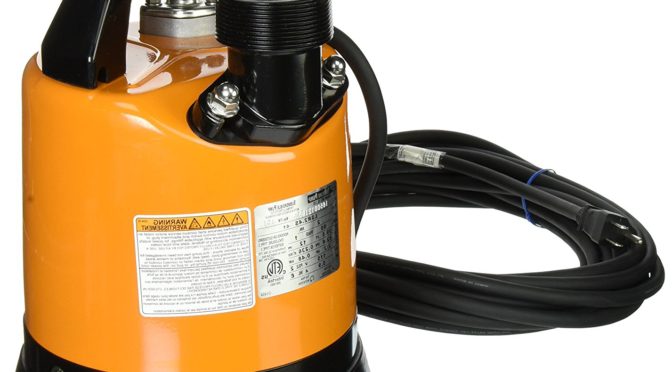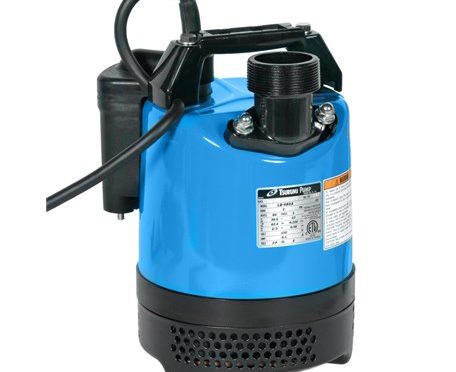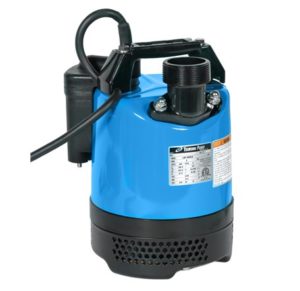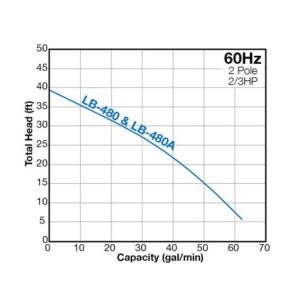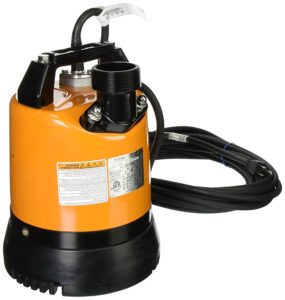 If you’re looking for a residential, commercial, or industrial pump, you can either a.) try to spend a little and end up spending a little over and over and over again, or b.) spend a bit more and not need to spend money for a long time. We prefer the second option, and we’ve found that a good submersible pump is typically going to cost us at least $300. So what are good options currently on the market for draining areas from basements to rooftops?
If you’re looking for a residential, commercial, or industrial pump, you can either a.) try to spend a little and end up spending a little over and over and over again, or b.) spend a bit more and not need to spend money for a long time. We prefer the second option, and we’ve found that a good submersible pump is typically going to cost us at least $300. So what are good options currently on the market for draining areas from basements to rooftops?
For general dewatering and drainage, our favorite manual and automatic utility pumps are the Tsurumi LB-480-62 (manual) and the Tsurumi LB-480A-62 (automatic). Both will drain down to 4 and 5 inches respectively while providing plenty of power to pump water in a range of situations from ponds and waterfalls to flood control in basements. Sometimes we want every last inch gone, which is where a pump like the Tsurumi LSC1.45-61 comes in with the capability of draining down to 1 mm above a surface. But what about when we don’t need quite as much drainage but would like a greater pumping speed than that from a residue pump?
This is where the Tsurumi LSR2.4S-60 Low-level Submersible Dewatering Pump comes in. Capable of draining down to 0.4 inches (10.2 mm), it’s an excellent pump for near-complete draining of surfaces like basements and pools in a short amount of time. Our full review is below, and you can buy it here.
Key Features of the Tsurumi LSR Submersible Pump (60 Second Summary)
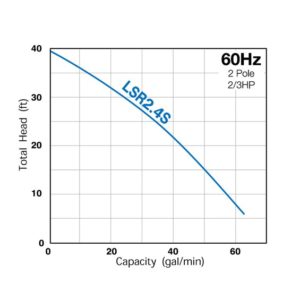 The Tsurumi LSR2.4S-60 is a manual low level submersible dewatering pump. It’s essentially an electric utility pump designed to remove and drain water from flat areas without sump pumps. It includes a 2/3 horsepower 110 volt, 6.1 amp single phase motor with a max flow rate of 3,780 gallons per hour (63 gallons per minute) at 5 feet. This rate drops to 3,000 GPH at 15 feet and shut-off occurs at the maximum head of 40 feet. It is capable of removing water down to as low as 0.4 inches (10.2 mm) above a flat surface and requires at least 0.2 inches of water to continuously run. The pump is 11-3/8 inches tall, 8-1/4 inches in diameter, and weighs 28 pounds. It is backed by the standard Tsurumi 2 year warranty and includes a 32 foot power cord.
The Tsurumi LSR2.4S-60 is a manual low level submersible dewatering pump. It’s essentially an electric utility pump designed to remove and drain water from flat areas without sump pumps. It includes a 2/3 horsepower 110 volt, 6.1 amp single phase motor with a max flow rate of 3,780 gallons per hour (63 gallons per minute) at 5 feet. This rate drops to 3,000 GPH at 15 feet and shut-off occurs at the maximum head of 40 feet. It is capable of removing water down to as low as 0.4 inches (10.2 mm) above a flat surface and requires at least 0.2 inches of water to continuously run. The pump is 11-3/8 inches tall, 8-1/4 inches in diameter, and weighs 28 pounds. It is backed by the standard Tsurumi 2 year warranty and includes a 32 foot power cord.
The LSR is a submersible pump with built-in thermal and amperage protection for the motor to allow it to safely shut down without failure when overloaded or run dry. It includes a 2 inch vertical (top) discharge outlet that requires a standard 2 inch hose (e.g., a PVC discharge hose); it will not work out of the box with a garden hose, although adapters are available to help you fit it to one. It will slide inside 9 inch diameter pipes and enclosures and includes a semi-vortex impeller to reduce maintenance over the life of the pump.
How Does the Tsurumi LSR Submersible Compare to Other Drainage Pumps?
 The LSR2.4S-60, like the majority of drainage pumps, is manual. To use it automatically, you’ll either need to buy an automatic float switch (we mention a range of recommended models below) or upgrade to the automatic version of the LSR, the LSRA2.4S-60. The primary difference between the LSRA2 and the LSR2 is that the LSRA2 includes an automatic float switch, allowing for fully automatic operation.
The LSR2.4S-60, like the majority of drainage pumps, is manual. To use it automatically, you’ll either need to buy an automatic float switch (we mention a range of recommended models below) or upgrade to the automatic version of the LSR, the LSRA2.4S-60. The primary difference between the LSRA2 and the LSR2 is that the LSRA2 includes an automatic float switch, allowing for fully automatic operation.
Compared to the Tsurumi LSC, the LSR is faster (3,780 GPH vs 2,700 GPH) and will pump to the same max head of 40 feet. However, the LSR will not drain water nearly as completely as the LSC, which, as a low-level residue pump, drains to 1 mm instead of to 10.2 mm. Both pumps are manual and will require a utility pump controller or similar automatic pump switch if you don’t want to need to manually plug and unplug it with each use.
Compared to the LB-480-62, the LSR pumps water at approximately the same maximum speed (3,780 GPH vs 3,744 GPH) and to the same maximum head (40 feet). The main difference between the two pumps is that the LSR, being a low-level pump, will drain far lower (to 10.2 mm) than the LB-480-62 (down to 101.6 mm). The LB-480A-62 has the advantage of automatic operation vs the LB-480-62, LSR, and LSC, which are all manual.
Our Short and Long Term Experiences Installing and Using the Tsurumi LSR Submersible Pump
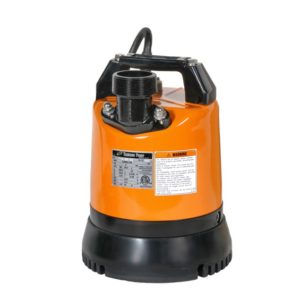 These pumps are capable of working in a range of settings, and we’ve generally come across strong reviews and feedback with a few exceptions. We’ve seen it used to pump water out of flooded basements after spring showers and floods, after hurricanes and flash floods, and in many other situations. Keep in mind that you’ll likely need to move the pump from one location to the next if you’re using it to drain water in a basement or pool; it can’t drain what it can’t reach. This is also where the 32 foot power cord comes in handy.
These pumps are capable of working in a range of settings, and we’ve generally come across strong reviews and feedback with a few exceptions. We’ve seen it used to pump water out of flooded basements after spring showers and floods, after hurricanes and flash floods, and in many other situations. Keep in mind that you’ll likely need to move the pump from one location to the next if you’re using it to drain water in a basement or pool; it can’t drain what it can’t reach. This is also where the 32 foot power cord comes in handy.
Practically speaking, you’ll likely be able to clear water past 10 mm down to 5-6 mm, depending on your surface conditions. The pump needs to be started with at least 1.5 inches (38 mm) of water, although once running, it can safely continue down to much lower levels.
The few issues we’ve seen with the LSR have involved rusting in the cast iron base and bolts; these issues were likely related to defective models. Thanks to the two year warranty, it’s easy to return the pump to have such issues addressed if they crop up. The main point to keep in mind for longevity is that the pump will need an automatic float switch or utility controller to work without supervision, as if you let it run dry, you will eventually damage the motor despite the thermal shut-off (which is intended to be a last-resort safety system, and not a set-it-and-forget-it alternative to a float switch). If you don’t want to set up a float switch like the HydroCheck HC7000 or HydroCheck HC6000 for indoor use or the HydroCheck HC6100 for outdoor use, you’ll want to buy the upgraded model, the LSRA2.4SA-60, which includes a built in float switch for automatic operation.
Troubleshooting and Installation Tips to Get Your Tsurumi LSR Submersible Working Sooner
If you’re planning on using the LSR with a generator, you’ll want to aim for one that can supply at least 3 times the full load in amperage, which means at least 18.3 amps for the LSR. A typical 2,700 or higher watt generator should be able to power it without trouble. We’d recommend the Champion 75537i 3100 watt generator for emergency use of the pump when the power cuts out.
As mentioned earlier, it’s essential to remember that you’re going to need a utility pump controller or accessory float switch if you want to run the pump without needing to watch over it. We recommend either HydroCheck HC7000 or HydroCheck HC6000 for indoor use or the HydroCheck HC6100 for outdoor use. Any of these controllers can handle a pump generating up to 3/4 horsepower with up to a 14 amp draw, which is enough to handle the LSR. Keep in mind that you’re also going to need a 2 inch discharge hose to drain water from the pump.
Tsurumi LSR Submersible Pump Pros, Cons, and Value Comparison
In conclusion, if you don’t need quite as much draining power as the LSC but want a bit more speed than what the LSC provides, the LSR is a solid choice for a low-level manual drain pump. It will also pump water down to a far lower level than the LB-480-62, which is a great all-around dewatering pump but not specifically designed to help extract water down to fractions of an inch.
Our main suggestion for the LSR would be to either connect it to an automatic utility pump switch so you won’t have to babysit it whenever it’s running or to simply buy the automatic version of the LSR, the LSRA2.4SA-60. If you choose the LSRA2 over the LSR2 and a separate float switch, you’ll never need to worry about warranty issues due to the reliability of the third party float switch. Beyond this advantage, you’ll also enjoy greater reliability due to using a switch Tsurumi specifically built to control the 4SA.
You can buy the Tsurumi LSR2.4S-60 here on Amazon or here from Tsurumi. You can buy the Tsurumi LSRA2.4S-60 here on Amazon. You can buy the Tsurumi LSC here. You can buy the Tsurumi LB-480A-62 here. You can buy the HydroCheck HC7000 here, the HydroCheck HC6000 here, or the HydroCheck HC6100 here. You can buy a 2 inch PVC discharge hose here. You can buy a 3100 watt inverter generator here or a 3000 watt large-capacity generator here.
If you find our work at PumpThatSump helpful, you can support our relentless reviewing of every sump pump on the market by shopping via our Amazon link for whatever you need to make your house a home. Despite being self-employed, we promise not to spend it all on health insurance.
